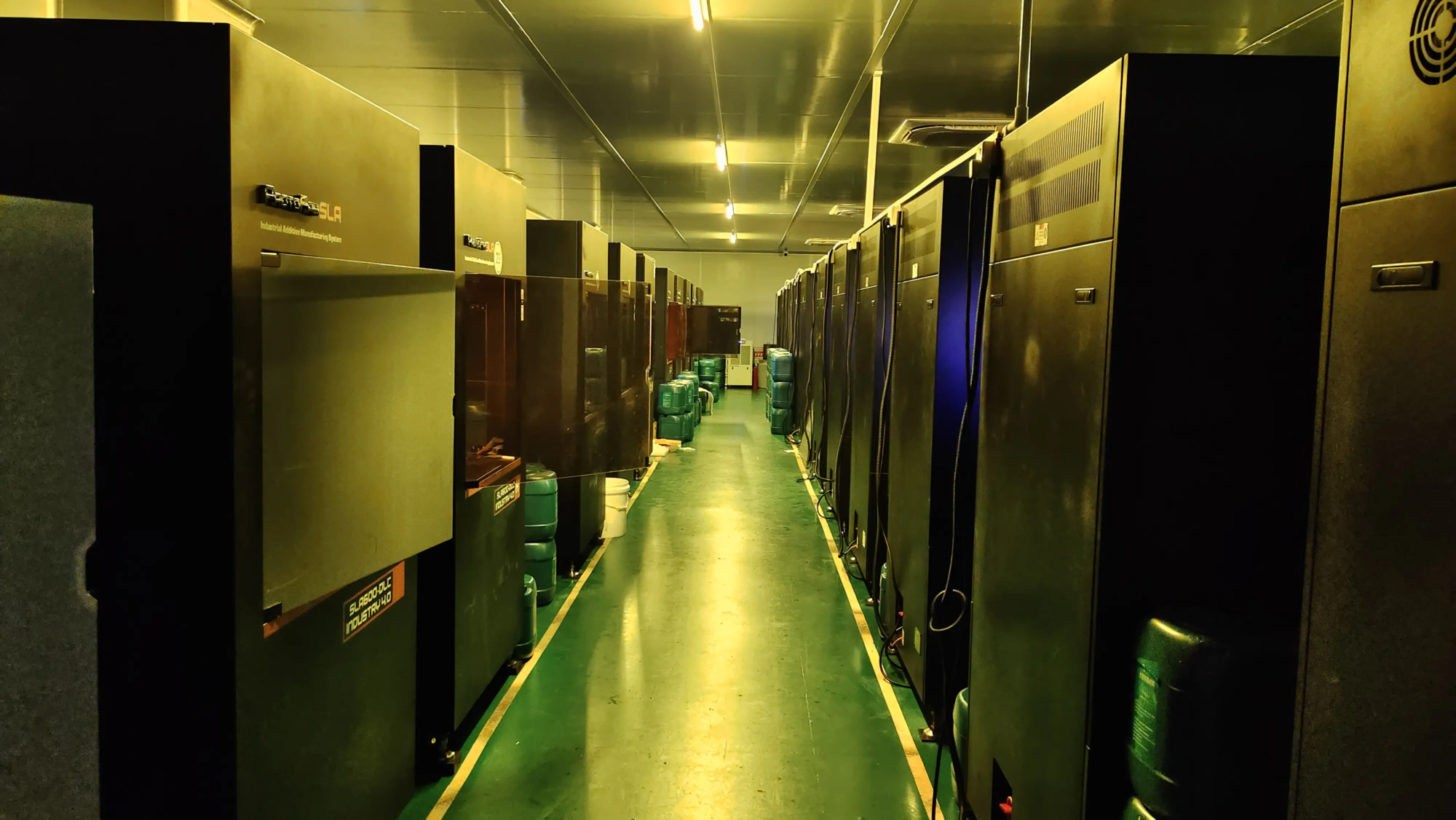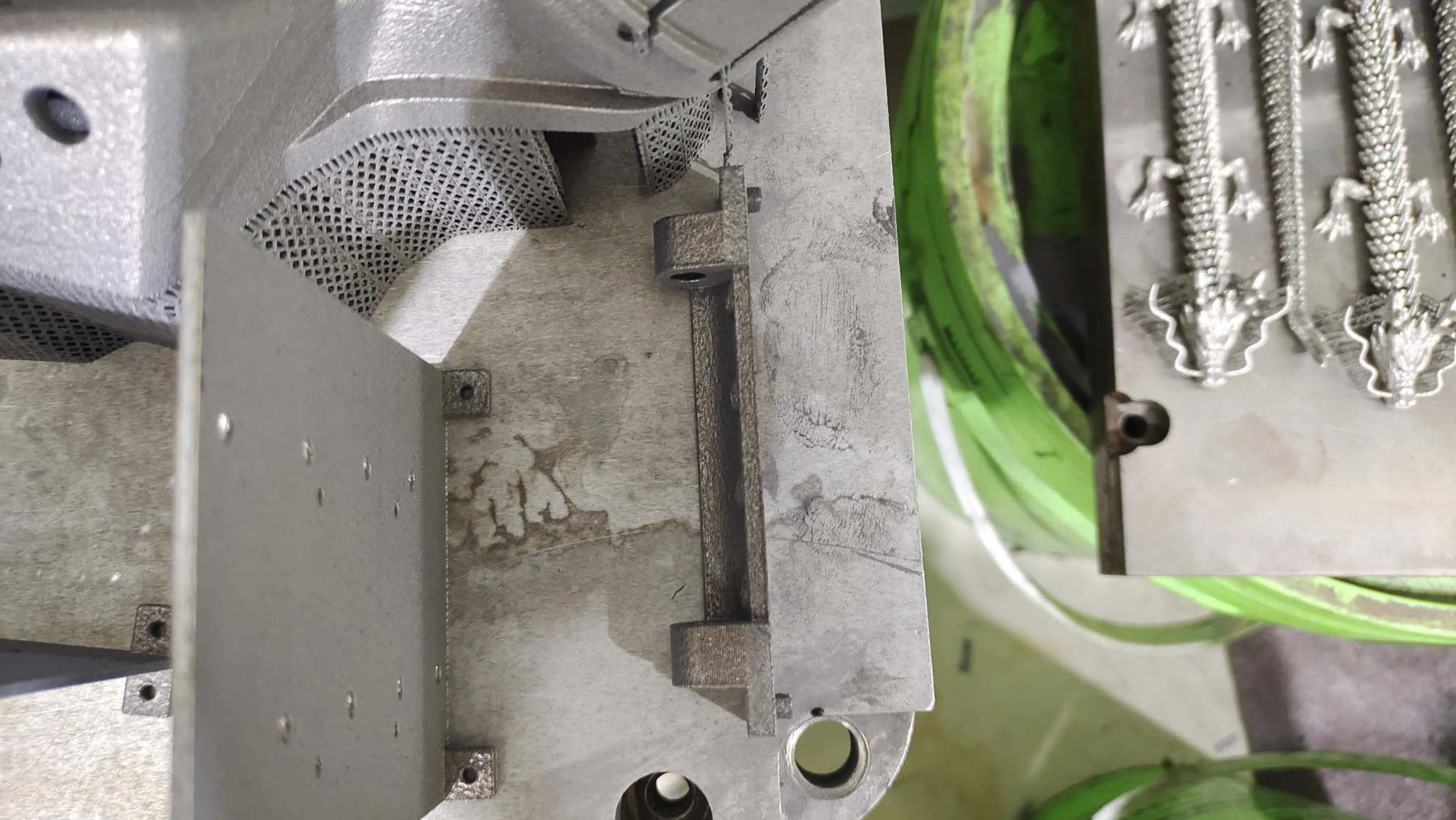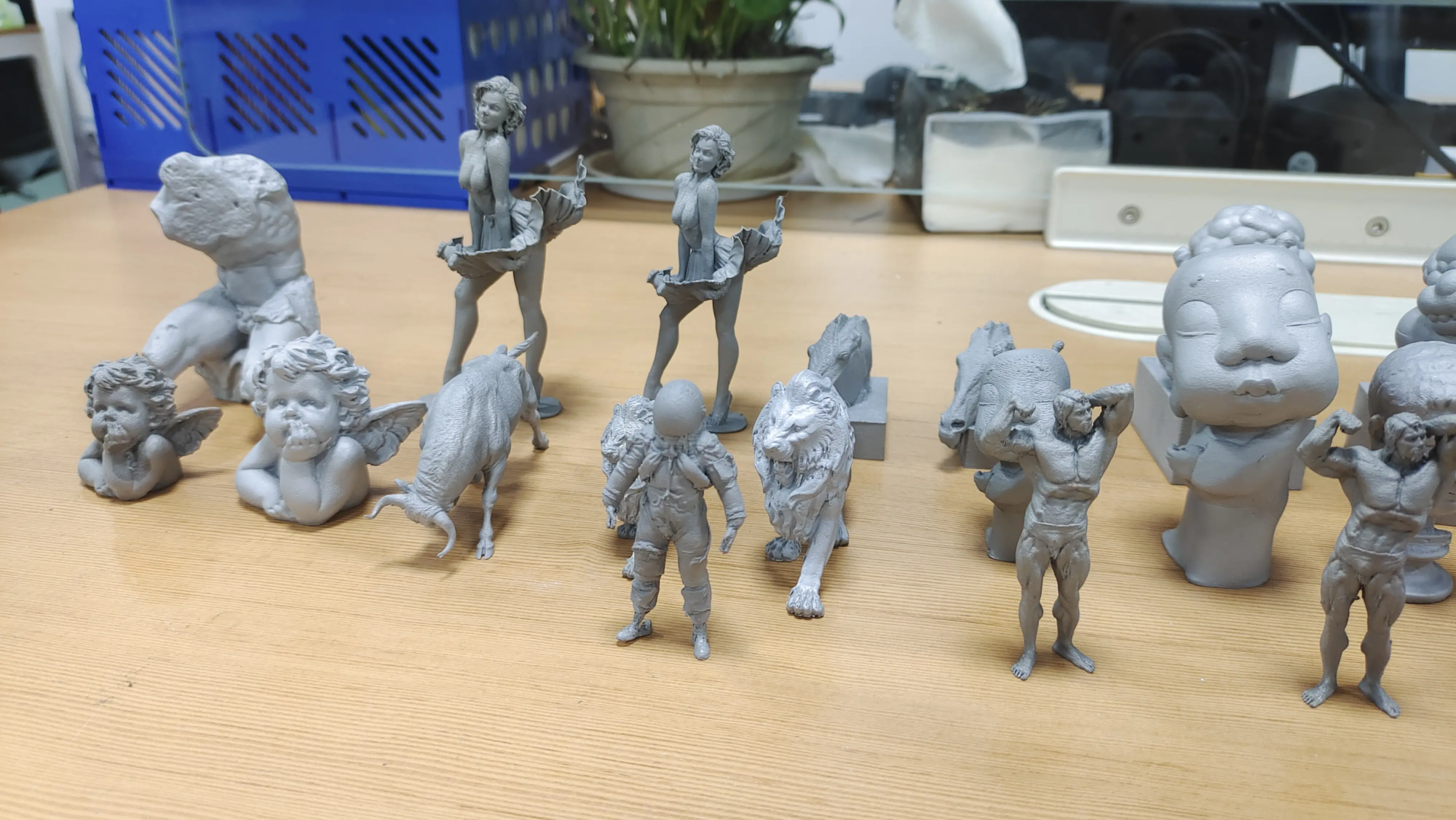The Future of Movement: How 3D printing redefines universal joint design and manufacturing
Universal joints or U joints are a mechanical miracle that is no exaggeration. The core function found in applications from automotive drive shafts and robotics to industrial machinery and even prosthetics is very simple: the rotational power is transmitted between the shafts, and the rotational power is not fully arranged. However, traditional manufacturing methods for these critical components are often subject to significant limitations in complexity, weight, cost and lead time. Enter Metal 3D printingIt is a revolutionary technology that unlocks unprecedented capabilities in general-purpose joint production. This guide explores the transformational potential of 3D printed U-joints and how the services provided by Greatlight lead this charge.
Beyond Forging and Processing: Traditional Obstacles
Conventional U joint manufacturing mainly relies on forging, casting or CNC machining. These methods face inherent challenges while being able to produce solid parts:
- Design limitations: Complex internal geometry, integrated functionality or optimized lightweight lattice are often impossible or too expensive. Barbecue and spiders (cross) require complex processing operations.
- Tool cost and delivery time: Forged molds or complex machining fixtures represent a large upfront investment and weeks or months of delivery times, especially for custom or small batch production.
- Material waste and weight: The subtraction process (processing) generates a large amount of material waste. Design manufacturability often results in heavier components than functionally necessary.
- Assembly requirements: Traditional U-connection requires precise assembly of multiple machining components (Yokes, cross, bearings, seals).
3D Printing: Unlocking Universal Potential
Metal additive manufacturing (AM), especially Selective laser melting (SLM)providing compelling solutions:
- Unrivaled design freedom: AM directly builds complex parts layer by layer from digital models. This can:
- Lightweight: Internal lattice structure, topologically optimized form and hollow cross-section greatly reduce mass without damaging strength – crucial for aerospace, racing or high-speed applications.
- Integration: Bearing mounts, lubrication channels and even sensor mounts can be integrated directly into the yoke or spider during printing, simplifying assembly and improving reliability.
- Optimized geometry: Complex curvature and orientation of optimal stress distribution and performance tailored for a specific load case can be easily achieved.
- Rapid production of prototypes: Design iteration is very fast. Functional prototypes can be printed in a few days, speeding up the development cycle. This agility seamlessly extends to small volume production runs without changing tools.
- Reduce material waste: As an additive process, AM uses only the last portion of the metal powder required, plus the smallest support structure, greatly reducing waste and processing.
- Custom: Creating custom U-combinations for niche applications, unique geometry or specific materials is economically feasible. No molding or heavy reprogramming is required.
- Performance Materials: SLM technology process advanced alloys (such as tool steel, titanium alloys, nickel superalloys, stainless steel, and even copper) are suitable for applications involving high torque, wear resistance, corrosion or high temperatures.
Material Problems: Strength, Wear and Environment
Choosing the right material is crucial. SLM 3D printing provides flexibility:
- 17-4ph stainless steel: Combination of strength, corrosion resistance and good toughness for general industrial applications and agricultural equipment.
- Maraging Steel (e.g., 1.2709): Super high strength and toughness after aging, ideal for extreme performance environments (racing sports, aerodynamic drive).
- Titanium alloys (such as Ti6al4v): When the highest strength to weight ratio is critical, combine with excellent corrosion resistance. Ideal for aerospace, drones and high-performance robotics.
- Tool steel (e.g. H13, M300): Excellent hardness and wear resistance, can be used in high-killing environments or heavy machinery.
- Aluminum alloy (such as Alsi10mg, Alsi7mg): Weight loss is the main driving force, and the ultimate strength requirement is slightly lower.
By Advanced Post-processing Technology – Careful support disassembly, precise machining of critical surfaces (bearing seats), heat treatment (solution annealing, aging, pressure relief), surface finishes (shooting, polishing, polishing, polishing, coating) and strict quality control – 3D printed U-hoints achieves the required accuracy, durability, durability, and requires engineers to finish the surface.
Example: Solving a complex challenge
Imagine that robotic applications require very compact, lightweight U-joints that can transmit high torque at high articulation angles within a sealed vacuum chamber. Traditional machining fails to create the required internal coolant channels and optimizes the thin-walled lattice support structure. Using SLM, Greatlight manufactures the U-joint as a single near mesh component that is resistant to corrosion 17-4PH. They integrate fluid channels, achieve 40% weight loss through topological optimization and achieve strict tolerances upon precise CNC completion. Delivery time was reduced from a few months to just 3 weeks.
Why Greatlight performs well in 3D printed U-joints
Working with experts is crucial when engineering components that are critical, such as 3D printing of universal joints. Great Stand out as Prime Minister Rapid Prototyping Manufacturer Specializing in complex metal parts:
- Advanced SLM Powerhouse: We utilize cutting-edge selective laser melting equipment to ensure accuracy, repeatability and access to the widest range of advanced metal powders.
- Deep Materials and Process Expertise: Our engineers are able to skillfully perform the nuances of DFAM (design additive manufacturing) for U-joints, ensuring a design for performance and manufacturability.
- Comprehensive manufacturing: It’s true One-stop solution providerWe have to deal with not only printing, but also with all key areas Post-processing – Heat treatment, CNC finish, surface reinforcement and rigorous inspection. Your parts are ready for integration.
- Speed and Agility: We specialize in research Rapid prototypinggreatly shorten your development cycle. Explore multiple iterations quickly and seamlessly enter small volume production.
- Customization mastery: From unique alloy requests to complex geometry and integrated capabilities, we specialize in bringing your most demanding custom U-joint vision to life.
- Quality and affordability: As One of the best rapid prototyping companies from ChinaWe use efficiency and expertise to deliver excellence Custom precision machining and 3D printed parts At the best price.
in conclusion
3D printing, especially metal SLM technology, represents a paradigm transfer in general joint manufacturing. It overcomes traditional obstacles and implements complex, lightweight, highly optimized and customized designs that deliver excellent performance in demanding applications. From accelerated prototypes to small-scale production, it is undeniable that AM’s agility and capabilities are. 3D printed U-joint is a compelling solution for engineers looking to unlock new levels of efficiency, performance and innovation in motion transmission systems.
Ready to revolutionize your drivetrain or robot assembly? Greglime is your expert partner for high-performance 3D printed U-joints and custom metal parts. We combine cutting-edge SLM technology, rocket-like processing expertise, and comprehensive post-processing of unparalleled results. Customize your precision fast prototyping parts now at the best prices! Contact Greatlight now for consultation and quote.
FAQ: 3D printing universal joints and
Is 3D printed metal universal joints sufficient for industrial applications?
- Absolutely. When correctly designed using DFAM principles, printed with state-of-the-art SLM machines and subject to proper post-processing (heat treatment, finishing), U-shaped joints 3D printed in materials such as 17-4ph, Maraving Steel or Titanium can meet or exceed the strength and durability requirements of most demanding industrial applications including high torp, including high torp, strength and durability.
What accuracy can I achieve using 3D printed u-joints?
- SLM 3D printing has high dimensional accuracy and is crucial for bearing fitting and mating surfaces. At Greatlight, we will print accurately with our Custom precision machining Function Post-processing If needed, critical tolerances (usually within the range of ±0.05mm or more, depending on the feature size and material) are achieved to ensure smooth operation and life.
Can 3D printed U joints handle wear and lubrication?
- Yes. Material selection is key – tools such as wear-resistant alloys (H13/M300) are excellent. Furthermore, compared to traditional designs that rely on external systems or grease nipples, the unique design freedom of 3D printing can integrate internal lubrication channels or reservoirs directly into the structure, thereby significantly improving lubrication efficiency and reducing wear.
Is 3D printing cost-effective for U joint?
- For prototypes, complex geometry, low to medium quantity production, highly customized design or weight loss provide significant system-level savings (aerospace, racing) applications, 3D printing for high Cost-effective. It eliminates tool costs and greatly reduces lead time. Greatlame focuses on providing solutions At the best price By optimizing the manufacturing process.
Can Greatlight produce the speed of functional 3D printed U-joint prototypes?
- Rapid prototyping It is the core force. Often, it can print, post-process and transport complex U-joints 5-10 working days Depend on the specific design, materials and completion requirements. We prioritize agility to accelerate your research and development.
What post-processing options do you provide for 3D printing U-joints?
- Provided by Greghime One-stop post-processing and completion service Tailored to the application. This includes support disassembly, CNC machining of critical interfaces, heat treatment (annealing, pressure relief, aging), surface finishes (shooting, polishing, polishing, grinding), coatings (e.g. DLC, Ni-PTFE, etc.), and rigorous quality inspection (DIMENSIANTY, DIMENSINES, NDT, material properties).
- Can Greatlight help me design U connectors for 3D printing?
- Our engineering team is proficient in DFAM. We provide design consulting and optimization services to leverage the full potential of additive manufacturing for your universal joint applications – focusing on weight loss, stress distribution, functional integration, manufacturing and cost-effectiveness. Contact us to discuss your specific requirements!





